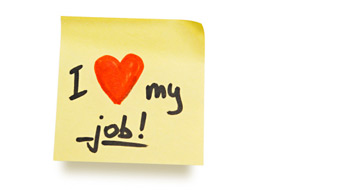

As part of her compensation package, Tiffany DaSilva, senior online marketing manager with Achievers in Toronto, earns points for reaching certain goals. Points are given for meeting sales targets or saving the company money, or for doing something that demonstrates the company’s core values.
Employees often trade those points for things such as a flat-screen TV or a high-end blender, but DaSilva had her eye on something a little different—she swapped her points for her newest family member, a miniature Chihuahua named Zooey.
Achievers, a leader in the $48-billion global employee rewards and recognition industry, is a small company with 170 employees in offices in Toronto (where the company started), Boston and San Francisco. Razor Suleman, the San Francisco-based founder and CEO, believes the only way any company—including his—can succeed is with engaged employees.
“It’s about aligning employee success with business success,” he says. At Achievers, in addition to a competitive compensation package, employees participate in the very recognition services that they deliver to clients.
Read this: Employers struggling with total rewards
So far, Suleman’s philosophy has led Achievers to some impressive results internally. The latest employee engagement survey results from October 2012 show that 88% of employees understand Achievers’ goals and objectives; 87% of employees have received recognition in the last seven days; 86% of employees feel supported by teammates and colleagues; and 86% of employees believe their leaders care about them as people.
And Achievers—which already boasts blue-chip clients such as Deloitte, 3M and Microsoft—is continuing to grow as other corporations pick up on the benefits of incorporating their rewards system. Last year, the company caught the attention of Sequoia Capital and four other venture capital firms, which collectively invested $24.5 million to help the company expand into the U.S. with its new approach to employee recognition.
Transition to Achievers
Until 13 months ago, Achievers was known as I Love Rewards, an HR rewards software provider with 44 employees in Toronto and a reputation as an outstanding place to work. It popped up often on best employer lists, including Greater Toronto’s Top 75 Employers.
For Suleman, though, that wasn’t enough. “The move to Achievers happened when we looked to the broader rewards and recognition market and realized it needed more,” he says. “Rewards are valuable and important tools in the tool box. But we wanted to supply the whole tool box.” Today, Achievers provides clients with an integrated suite of software and social recognition tools to help reward employees.
Read this: Rewards and technology boost engagement
But before Achievers rolled out the expanded services to clients, it launched them internally.
How it works
Achievers’ internal employee recognition program is called Overachievers. Suleman says the company sets aside 3% of its total compensation budget for rewards; most companies spend 1% to 2%. The program is aligned to Achievers’ business goal of recruit, retain and inspire great employees, he says.
The core element is a peer-to-peer recognition program that lets employees award points to colleagues who they feel demonstrate the company’s core values. This is in addition to points that employees receive for recommending someone for a position (and again, if that person is hired), as well as for meeting job-related goals.
Suleman explains that each employee is allotted $5 per week ($260 annually) for the peer-driven rewards system. One point is equal to a penny, and employees can decide how many of those points to give to individual colleagues. He explains that rather than simply paying out this money as cash bonuses, the peer system ensures that employees work closely with their co-workers and are more aware of what individual people contribute to the team.
An online catalogue lists the items and experiences for which employees can trade point amounts, including options from popular companies such as Expedia. And an in-house concierge team helps facilitate unusual reward requests—like a puppy.
Read this: Group dynamic
“I wanted to make my redemption special,” explains DaSilva. “They aren’t just points for me; they’re a collection of recognition from my friends and co-workers. It’s not about a watch or a grandfather clock. It’s about something relevant to me. There is nothing better than getting home from a hard day at work to a happy, excited puppy. It’s an instant reminder of why I want to be working at Achievers.”
With the social network-inspired software that Achievers uses to keep track of employee, team and department goals and achievements, employees can log in to see why they have been recognized by peers, give points to others, see their total points, learn where to cash in those points for rewards and receive messages from supervisors. Managers can use the system to launch department-specific initiatives (such as a recruiting campaign). C-suite executives can view data showing how employees are responding to the recognition.
“They can see how each office is doing compared to other offices and what people are getting rewarded for,” says Suleman. “We also add industry data so they can benchmark their performance to see how they measure up.”
